Wondering how to change download folder for Microsoft Edge Chromium?
The default setting for Microsoft Edge is to save your downloads to the ‘C:/Users/username/Downloads’ folder. This is logical, but it isn’t suitable if you perform hundreds of downloads on a regular basis. The Downloads folder is part of the primary partition, so if storage space is a concern, it is not wise to fill it up with a lot of large files.
Fortunately, Microsoft Edge Chromium has the option to change the default downloads folder. You can change it to either another location within the primary partition or a different drive or partition entirely.
In this guide, we will walk you through different methods of doing so in detail. All the methods are easy to execute, and should not take much of your time!
Let’s get started!
1. Modify Browser’s Settings.
The simplest way to accomplish the task in question is through Windows Settings.
However, this method can be used by all standard users to change the download location. If there are multiple users on your PC, prevent them from customizing such features using Windows Registry.
Here is what you need to do:
- Launch Microsoft Edge and click on More button (three dots) on the top-right corner of the window.
- Select Settings from the list of options available.
- Choose Downloads from the left panel and in the right pane click on the Change button.
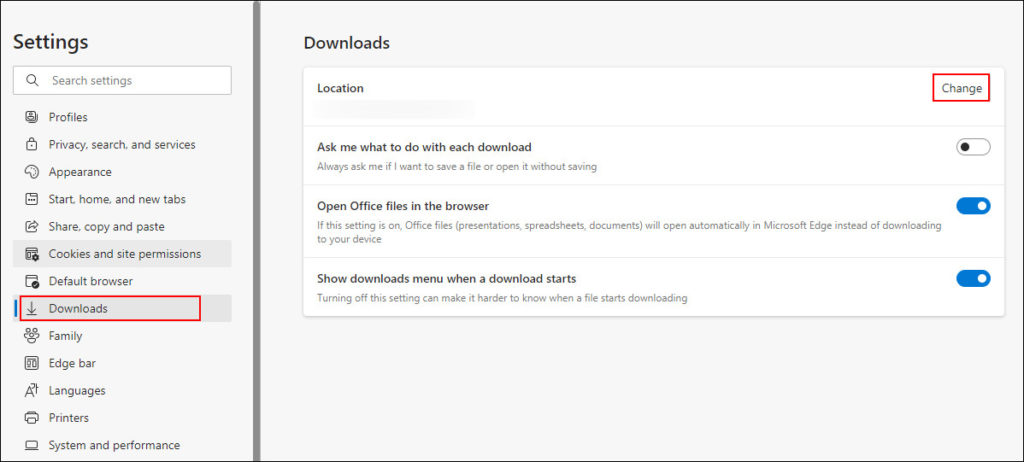
- Next, choose the location where you wish to download the files.
This should easily change the download location for Microsoft Edge files.
2. Use the Registry Editor.
Windows Registry is a database that stores low-level information about operating system processes and applications. This information is stored in the form of Registry keys, and Windows refers to it when performing relevant operations.
In this method, we will modify keys related to Microsoft Edge to change the download location. Make sure, however, that you are logged into Windows as an administrator before proceeding with the method mentioned below.
- Press Windows + R keys simultaneously on your keyboard to open a Run dialogue box.
- Inside the text field of the dialogue box, type regedit and hit Enter to launch Windows Registry.
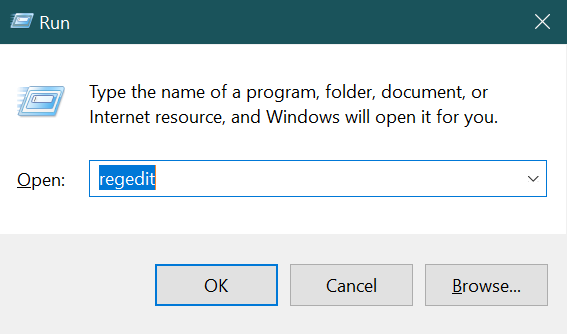
- Once you are inside the Registry Editor, navigate to the location mentioned below.
HKEY_LOCAL_MACHINE\SOFTWARE\Policies\Microsoft\Edge
- If you cannot locate the Edge key, right-click on the Microsoft key and select the New > Key option.
- Rename this key as Edge.
- Double-click on the Edge key and right-click anywhere in the right pane.
- Select the New > String Value option and rename this value as DownloadDirectory.
- Under Value data, type the path where you wish to save the download file.
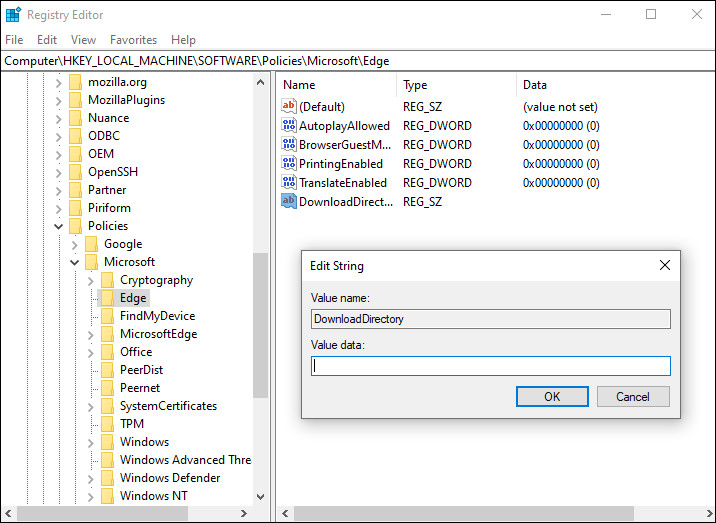
Doing so will make administrative-level changes on your PC.
3. Try Using CleanMyPC.
A virus or bug may be infecting your system if you cannot execute any of the methods described in this guide. Prior to performing the methods mentioned here, it would be best if you clear the junk files.
It is best to use a professional PC cleaner to remove clutter from your computer. One recommendation we have is CleanMyPC.

In addition to removing junk files, CleanMyPC has a range of tools that can address other PC problems. After you install the tool and run an initial scan, the tool will automatically find and fix problems without human intervention.
CleanMyPC is also quite easy to use. Even if you’ve never used a PC cleaner before, you’ll have no problem using it.
4. Use the Group Policy Editor.
Another easy way of changing the download folder for Microsoft Edge is by using the Group Policy Editor.
Similar to Windows Registry, Group Policy Editor (GPE) enables users to customize the behavior of their operating systems from an administrative standpoint. GPE stores information in the form of policies, which can be modified to make the desired changes.
Here is how you can use the Group Policy Editor to change the download folder:
- Visit Microsoft’s official website.
- Scroll down the window and select the version details of your Microsoft Edge.
- Click the GET POLICY FILES button to download the policy files.
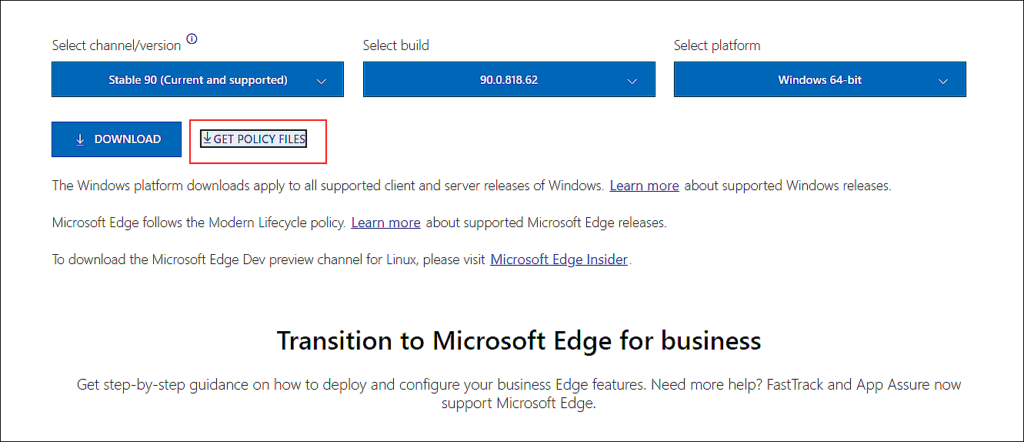
- Once the download is complete, extract the downloaded file and then open the folder.
- In the folder, navigate to the location mentioned below.
MicrosoftEdgePolicyTemplates\windows\admx
- Copy the msedge.admx and msedge.adml files and paste them in the C:\Windows\PolicyDefinitions folder.
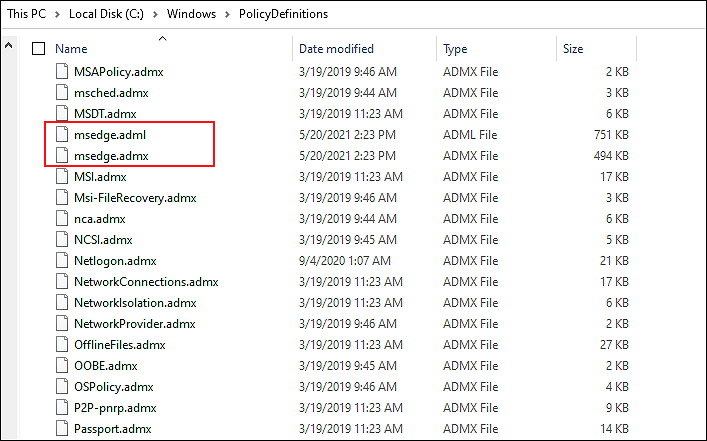
- Once you have pasted the files, restart your PC.
- Upon reboot, press Windows + R keys simultaneously on your keyboard to open a Run dialogue box.
- Inside the text field of the dialogue box, type gpedit.msc and hit Enter to launch Group Policy Editor.

- Once you are inside the Group Policy Editor, navigate to the location mentioned below.
Computer Configuration\ Administrative Templates\ Microsoft Edge
- In the right pane, double-click on Set download directory and select Enabled or Not Configured.
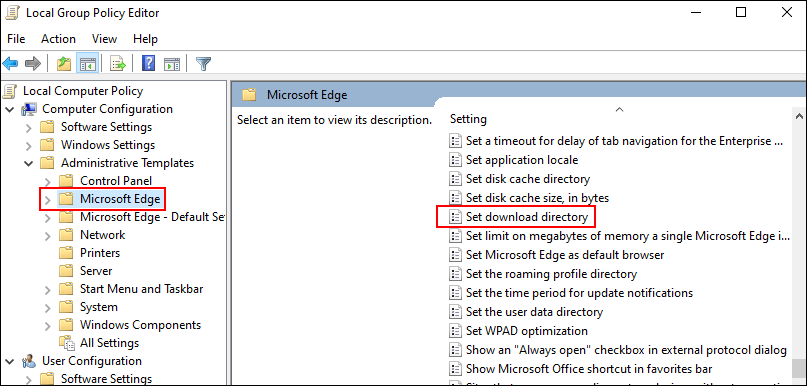
- Under Set download directly, type the location where you want to save the files.
- Finally, click on Apply to save the changes.
You can always change the location to another by repeating the steps we just went through.
This brings us to the end of our guide on ways to change download folder for Microsoft Edge Chromium. We tried walking you through all the steps in detail and hope that one of the methods mentioned in this post did the trick for you. In case you still have any confusion about the steps, please let us know in the comment section below!
If this guide helped you, please share it. 🙂





